I have put off writing anything about this for several reasons. First of all, there is a lot of secrecy surrounding the use of the Voltair magic machine. No one will admit to it, however, I have had several off-the-record conversations with various engineers. All of this is hush-hush, unofficially off the record and on the QT, so no names, call letters, or cities of license can be disclosed.
The general gist of these conversations is this; the Voltair seems to be increasing ratings in some cases but not others. It is sometimes too early to tell whether the increased ratings are a one-time anomaly or something more permanent. In one case, an AC station saw 30% increase in numbers, while a certain talk station saw next to nothing. Results are mixed.
In the credit where credit is due department; the Telos Marketing campaign has been effective. Again, from a variety of different sources; Program Directors, Market Managers, and Sales Managers are “beside themselves,” or “giddy” when the UPS truck delivers the Voltair to the front door. In one case, requiring that “I (the market engineer) drop everything” to get it installed as quickly as possible and “acting like it is God’s gift to radio.” It looks like all those trade publication ads are paying off, $15,000 at a time.
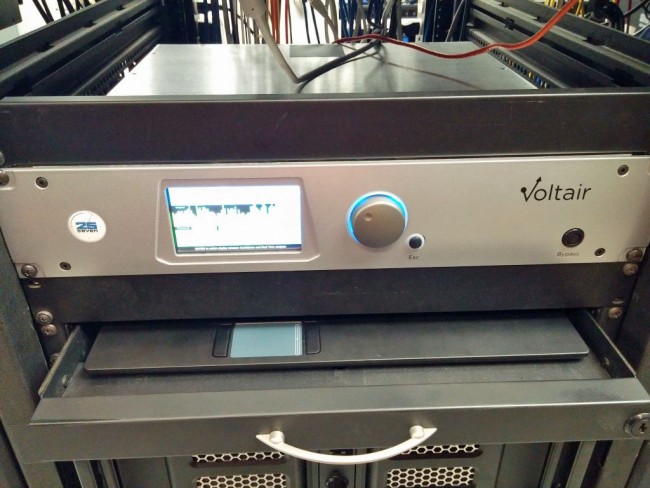
One interesting thing about the Voltair, you can program simulated listening environments such as sporting events, restaurants, kitchens, vehicles, etc. This allows the user to see how their program material is being decoded by a PPM survey device in those types of environments. For example, if you are a sports station, having your program material decode well at sporting events or restaurants and bars might be important.
Of course, we have all seen the confidence display:
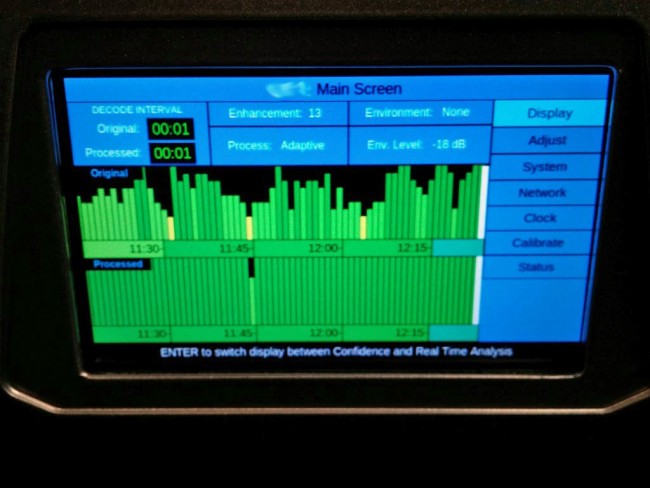
So, what does this mean? Perhaps there is an inherent flaw in the Nielsen PPM encoding technology. In the past, PPM has been blamed for the demise of the Smooth Jazz format. I always had the notion that Smooth Jazz was responsible for the demise of the Smooth Jazz format. However, if PPM is indeed causing certain program material to disappear from the airwaves, then it would be a case of the tail wagging the dog. If PPM requires that station owners purchase a $15,000 in order to get credit for their TSL and cume, then there is a pretty big problem with the technical aspects of the system.
Of course, there are others that say there is no “Voltair effect.” The Voltair machine is simply a fancy and expensive gizmo that looks good but does not really do anything.
Nielson Audio is having a Webinar on July 21 to address some of the questions regarding the Voltair and PPM encoding for subscribers only. It will be interesting to see what the outcome is.



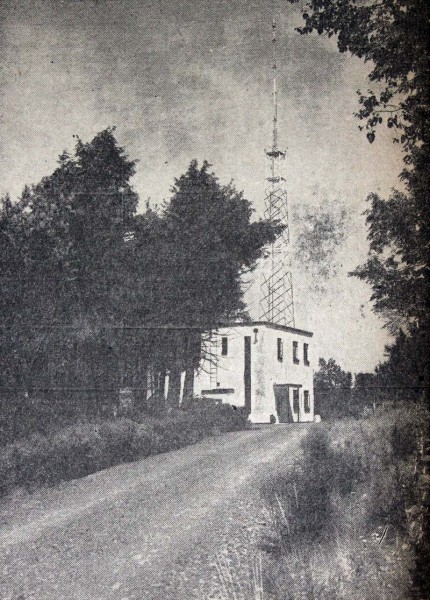
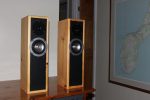
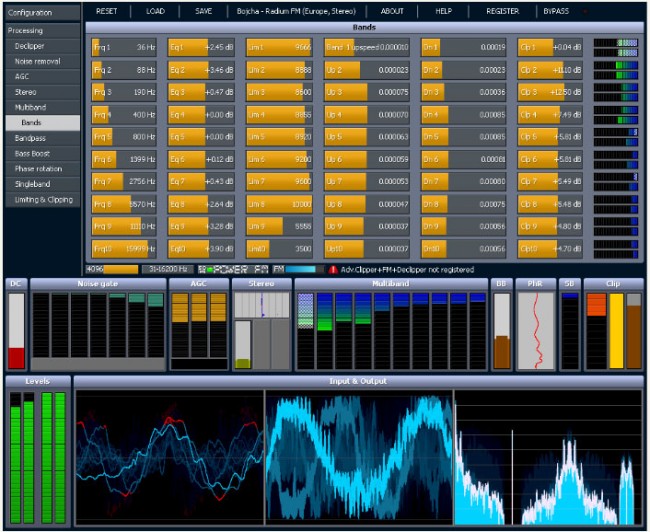
It seems to me (my employer does not use the product, to my knowledge) that this is kind of a first volley of “Hi-Fi” marketing into the broadcast equipment buying pool. It will probably help 10%-20% of the folks that buy it, by virtue of making up for deficiencies in their audio chain (not fixing the deficiencies, but manipulating them in such a way that a tunnel of sorts is carved for the PPM data to get through the rest of the mess). It will give another 50%-60% of the market some sense of assurance that they’re “not missing out on anything” even though it isn’t actually contributing anything to that effort. And it will give the remaining 20%-40% of the buyers some heartburn in their sensitive wallet areas.
In short, it’s only partially delivering on its literal marketing claims but it’s substantially delivering on the perceptions of the consumers who are buying into the marketing claims.
We buy one car over another essentially identical car because something about the one makes us happy. We assume that the additional amount we’re paying somehow justifies this, and it does to a point, but only psychologically. But that’s worth something to us, regardless, and so many of us will pay for it. That’s what’s happening here… a manufacturer has taken a big step forward into the realm of capitalizing on how technical equipment makes us feel, not just on what it actually does.
Similar things have been done before with processing of course, but this is the first time that there’s been such a concrete connection between product and profit. That’s what makes this new. The fact that there’s additional intrigue generated by Arbitron’s resistance/reactions/aversion and general CYA-ness to the Voltair only lends to the “oooh, it must be good if it’s upsetting the man!” factor.
Time will tell if there’s actual merit beyond all of this or not, but the marketers are getting smarter. And that’s worth keeping an eye on.
I’ve heard from a few NYC engineers that the system works. Works very well. My opinion is now that the ratings system can be gamed the ratings value is diminished. IOW You can pay you get better ratings. I think stations that do not gain from ratings should turn off their encoders. That would make the ratings even less valuable.
Stu, I’d go even further and suggest all stations turn off their encoders, dump Arbitron/Nielsen and re-learn how to sell. Perhaps we’d see actual “programming” again, instead of the homogenous monotony our current system has produced.
I couldn’t agree with you more Chuck.
All of this has made me think about how rating services work in radio. It seems to me that there are easier, cheaper and better ways to do this. For example, a smart phone app.
This system would yield many many more sample points than PPM, thus creating a much more accurate picture of who is listening to what, including streaming services like Pandora and Spotify. It would eliminate the radical departures from normal seen in the PPM system, which are due to insufficient sample size.
Apparently, there is not an app for that… yet.
It’s a box with a pretty front display that will amuse any PD or GM even though we really don’t know what the hell it does. How about giving me the $15,000 for my budget as I have a crap load of things to repair rather than piss it away on another box in our airchain.
As reported today by All Access Nielsen will not support Voltair while citing upcoming enhancements to its own technology. Wonder what that means to stations who jumped onto this technology.
They paid a lot of money for a momentary bump in ratings… or not in some cases. It seems that Nielson will be increasing the number of PPM decoders in the field and updating their PPM technology. Interesting…
After reading the AllAccess story, Nielsen confirms that Voltair does indeed do what Telos advertises — makes audio “more watermarkable.” They can’t support it because they would be admitting their watermark encoders don’t do enough and some opportunities are missed. Instead they’re taking the research Telos has done to create a product and will be modifying the firmware on their encoders to try to make it more robust.
My guess is that stations will continue to use/purchase the Voltair because it actually processes the audio specifically for PPM and provides something like a confidence monitor.
One of the aspects of this box that nobody has touched on yet, is what exactly it does to the actual “listenable audio” coming out of your speakers.
By farting around with the spectral balance and the watermarking, the end result is similar on voice to how the host used to sound when a Gentner digital hybrid was turned up too loud. That same ringing and digital swooshy sound wrapped around the voice.
The most noticeable version of that sound is on WFAN in NYC and WPEN in Philly. Sounds like Francessa is in a metal trash can most of the time.
So $10-12k is spent on a fancy new audio processor that we (the engineers) take weeks to set up and make sound as best as possible and now this thing gets slapped in the chain and it all goes to hell. That should tell you where the business is headed if gaming the ratings is necessary for survival. That should also tell you how weak the Nielsen system is if this box even needs to exist.
OK,
counter point; if the 25/7 Voltair is proving to show more qualified listening to a station, then if Nielsen corrects its encoder deficiency with a revision of the PPM encoder, then that could increase the total number of listeners in a market which would benefit all of us by providing better data on Total Number of Listeners and TSL?
So, after years and years of customer complaints about something fishy about the inconsistent PPM ratings performance of certain voices and types of music, Nielsen has decided to release a new version of their software which they say will address the same deficiencies that Voltair currently addresses, deficiencies which Nielsen says do not actually exist.
Ya think say Nielsen lawyers cooked up this double talk?
http://blog.kabrich.com/
Mr. Kabrich knows more about PPM than almost anyone on the planet outside Nielsen. He shows us why the Emperor (Voltair users) have no clothes.
I have done many tests with the encoding equipment and my own research has me pretty well confident that the Neilson system is a pretty big pile if crap. If the station in question doesnt modulate with true stereo programming 100 percent of the time the encoding signal all but disappears during the mono programming……….lme the mono programming while your morning show is yacking it up on four mics with a caller for 7 minutes during your precious morning drive. Extremely quiet passeges of music also yeildoan almost total loss of encoding tones. The louder and more aggressive the programming the more the Neilson equipment seems to do. Funny how the stations that seem to need it the least are the ones that it benefits the most. The Votaire DOES seem to kevel the playing field….a muddy, slippery field that in any other sport would cause a rain delay at minimum.